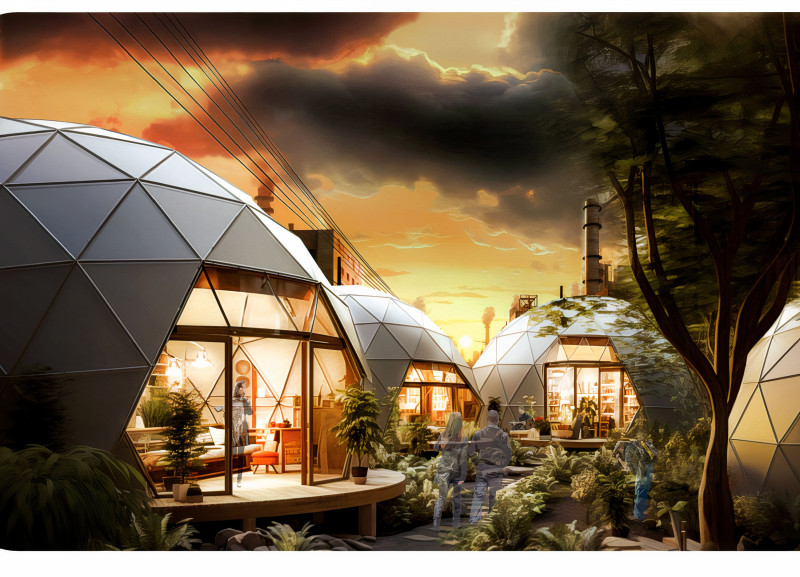5 key facts about this project
From the outset, the project is characterized by its clear functional intent, which serves a dual purpose of public engagement and private space. The main structure features a multifaceted layout that accommodates various activities, promoting interaction and inclusivity among its occupants. The careful arrangement of spaces encourages movement through the building and enables a seamless transition between indoor and outdoor environments. This blurring of boundaries fosters a sense of connection to the surrounding context, which is an important consideration in contemporary architectural design.
In terms of materiality, the project employs a diverse palette that combines both sustainable and locally sourced materials. The exterior facade predominantly features concrete, providing durability and a modern appeal, while also allowing for creative textural applications. This is complemented by large expanses of glass that enhance transparency, inviting natural light into the interior spaces and creating visual links to the outdoor landscape. Additionally, wooden accents add warmth and depth, further establishing a relationship between the built environment and its natural surroundings.
A unique aspect of the design is its innovative approach to sustainability. Thoughtful passive design strategies include strategically placed windows for optimal daylighting, as well as green roofs that not only contribute to the building’s ecological footprint but also serve as recreational spaces for users. These elements are indicative of a broader trend in contemporary architecture that prioritizes environmental stewardship alongside aesthetic considerations. The incorporation of energy-efficient systems, such as solar panels and rainwater harvesting, underscores a commitment to reducing the project’s carbon footprint while enhancing the overall functionality of the space.
The interior layout offers a variety of configurations to accommodate diverse activities, catering to the needs of various users. Open-plan spaces are interspersed with more intimate areas to promote both collaboration and individual reflection. The careful detailing of each space reflects a keen understanding of human behavior, ensuring that the architecture serves its intended purpose effectively. Particularly noteworthy are the communal areas designed for gatherings and events, equipped with flexible furnishings that allow for adaptable uses throughout the day.
The landscaping surrounding the project plays a pivotal role in its visual impact and functionality. Thoughtfully designed green spaces not only enhance the aesthetic appeal but also provide essential ecosystems that contribute to biodiversity in the urban context. Pathways meander through the landscape, inviting exploration and interaction while guiding visitors from one space to another. This design choice reinforces the concept that the architecture extends beyond its walls, promoting an engaging outdoor experience.
Moreover, the integration of technology within the project reflects a modern approach to architectural design. Smart building systems that enhance user experience and operational efficiency are seamlessly integrated, ensuring that the building performs optimally while enhancing the comfort of its occupants. This forward-thinking mindset aligns with contemporary architectural trends that prioritize innovation and adaptability in design.
Exploring this project further through architectural plans, sections, and detailed designs can provide valuable insights into the thoughtful complexities of its design. The architectural ideas manifest within the project not only showcase creative solutions to contemporary challenges but also demonstrate a profound respect for the context in which it exists. Engaging with these elements offers a deeper appreciation of the architectural narrative that unfolds across this multifaceted project. For those interested in contemporary architecture, examining the nuances of this design can be enlightening and inspires further dialogue on the evolving role of architecture in urban environments.


 Skyler Ashton Perryman,
Skyler Ashton Perryman, 




















